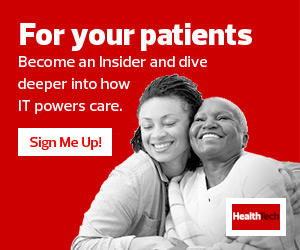What Are the Goals of Revenue Cycle Management in Healthcare?
Successful RCM does more than just help healthcare organizations; it also benefits patients. Richard Gundling, senior vice president of professional practice for the Healthcare Financial Management Association, says it’s important for everyone to be aware of the financial expectations.
“It’s on the hospital or physician to make sure resources applied to care are documented correctly, and that if there will be an out-of-pocket expense, that the patient will be notified before the service is complete,” he explains.
MORE FROM HEALTHTECH: Learn why the patient scheduling experience needs an upgrade.
Most patients don’t know the details of their health benefits until it’s time to use them, and unexpected health expenses can put people in difficult financial situations. A major goal of managing the hospital revenue cycle is to let patients know of expenses ahead of time, giving them the opportunity to make financial arrangements, speak with hospital administrators about financial assistance or seek a different treatment if necessary.
“We don’t want patients to go into medical debt or be surprised by their bill. The industry is shifting to engaging patients about their financial obligations earlier in the treatment process,” Gundling says.
Accurate and complete information collection is also important to ensure claims aren’t denied because of missing information or improper coding. Effective RCM mitigates errors and eliminates redundant processes to lower the documentation burden on clinicians and administrative staff.
How Does Tech Improve Revenue Cycle Management in Healthcare?
In addition to improving speed, efficiency and accuracy of the billing process, technology can enhance the patient experience as patients move through their financial journey in healthcare.
“From the very beginning, before a patient arrives for the scheduled service, technology can help a patient know the time and place for the appointment,” says Gundling, adding that all patient insurance information should already be collected by the healthcare organization.
More healthcare organizations are implementing digital-first strategies to improve the efficiency of their RCM rather than relying on conversations over the phone. An automated email or text service can remind patients of important appointment information, while apps and online patient intake ensure that insurance information is collected before the appointment for preauthorization, freeing up support staff to work on other tasks.
A suite of software solutions supports revenue cycle management in healthcare, and automation helps speed up the process while reducing errors.
LEARN MORE: Find out how digital-first strategies are shaping healthcare.
“Much of the preauthorization, which happens at the beginning of the care process to ensure that insurance coverage is available and approved, benefits from automation,” says Gundling. “Automation can help share key insurance benefits, anticipated diagnosis and related procedure codes, and provide price estimates in a more streamlined manner.”
RCM programs are usually integrated with a healthcare organization’s electronic health records, where physicians enter patient data and medical codes. However, disparate systems can create barriers. Gundling says integration between those systems is key to streamlining RCM.
Technology is also changing the way patients interact with their insurance providers. Insurance companies will often be able to provide much of the financial information patients are looking for as they engage with healthcare. A shift is happening in this information exchange, moving from phone calls to secure online chats, sometimes with chatbots, and online price estimation tools.
Tips for a Successful Revenue Cycle Management Strategy
Gundling emphasizes the importance of transparency throughout the RCM process as well as tools to engage patients as early as possible in the healthcare journey.
“If patients know what they’ll owe before the service, they are more likely to pay. We want to create more of a retail environment to engage the patient early,” he explains. “At a restaurant, you can estimate what you’ll pay beforehand. It’s not the same at a hospital.”
This principle applies to ER visits as well. Patients should be treated first, but once appropriate, they should be informed of the costs so they understand their obligations and can take that information into consideration when planning additional services or follow-up visits as part of their treatment plans.
Some patients will find insurance language complicated and difficult to understand. Gundling suggests that healthcare organizations engage patients with a blend of people and technology using clear, consumer-friendly language. This makes customer service training an important part of the RCM strategy.
Patients may even ask clinicians billing questions. If the clinicians are unable to answer the question themselves, they should be able to point patients in the right direction to find the information they’re looking for.
“The patient should feel that there was a good handoff. It’s all about people, process and technology,” Gundling says.











